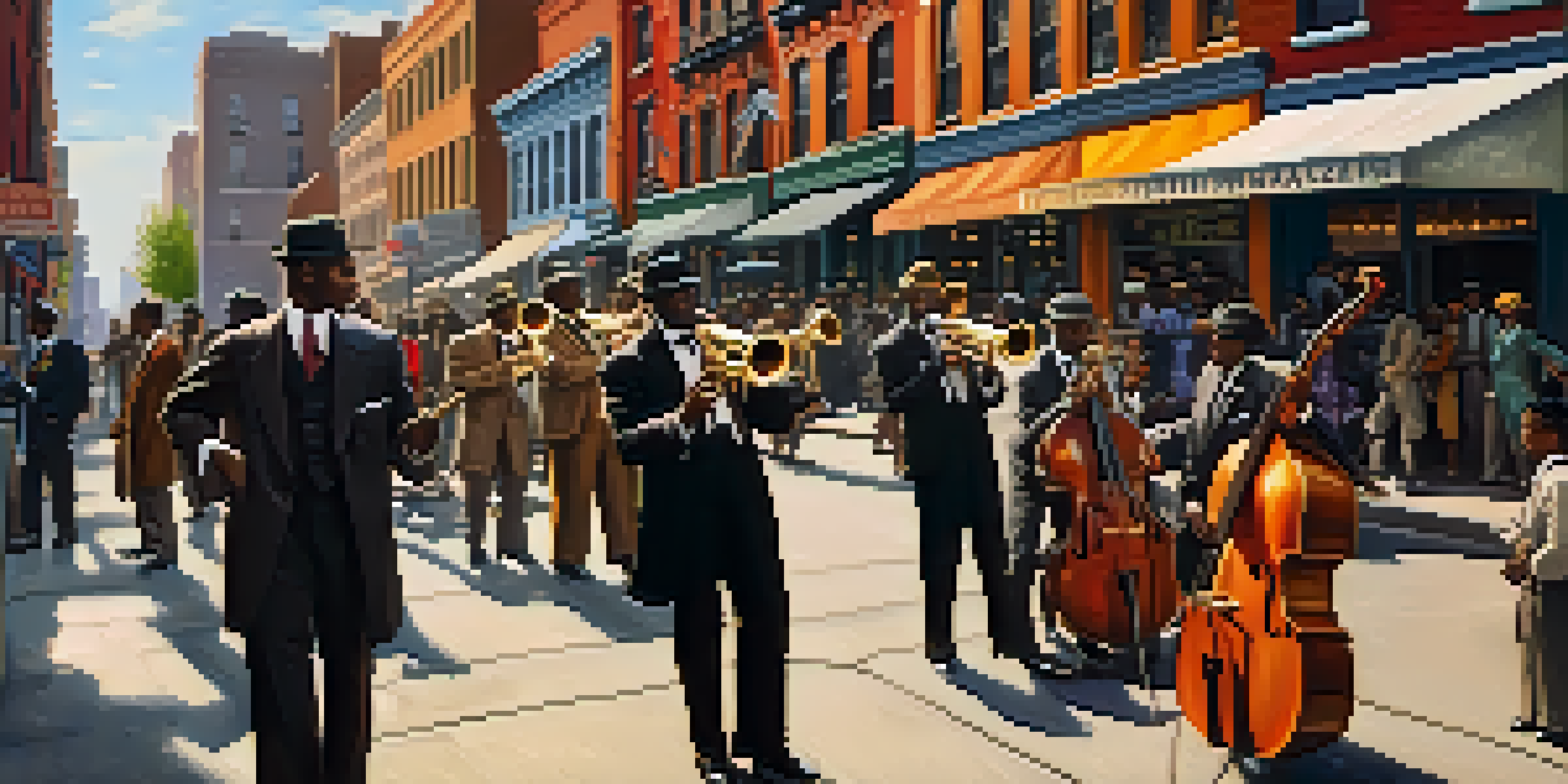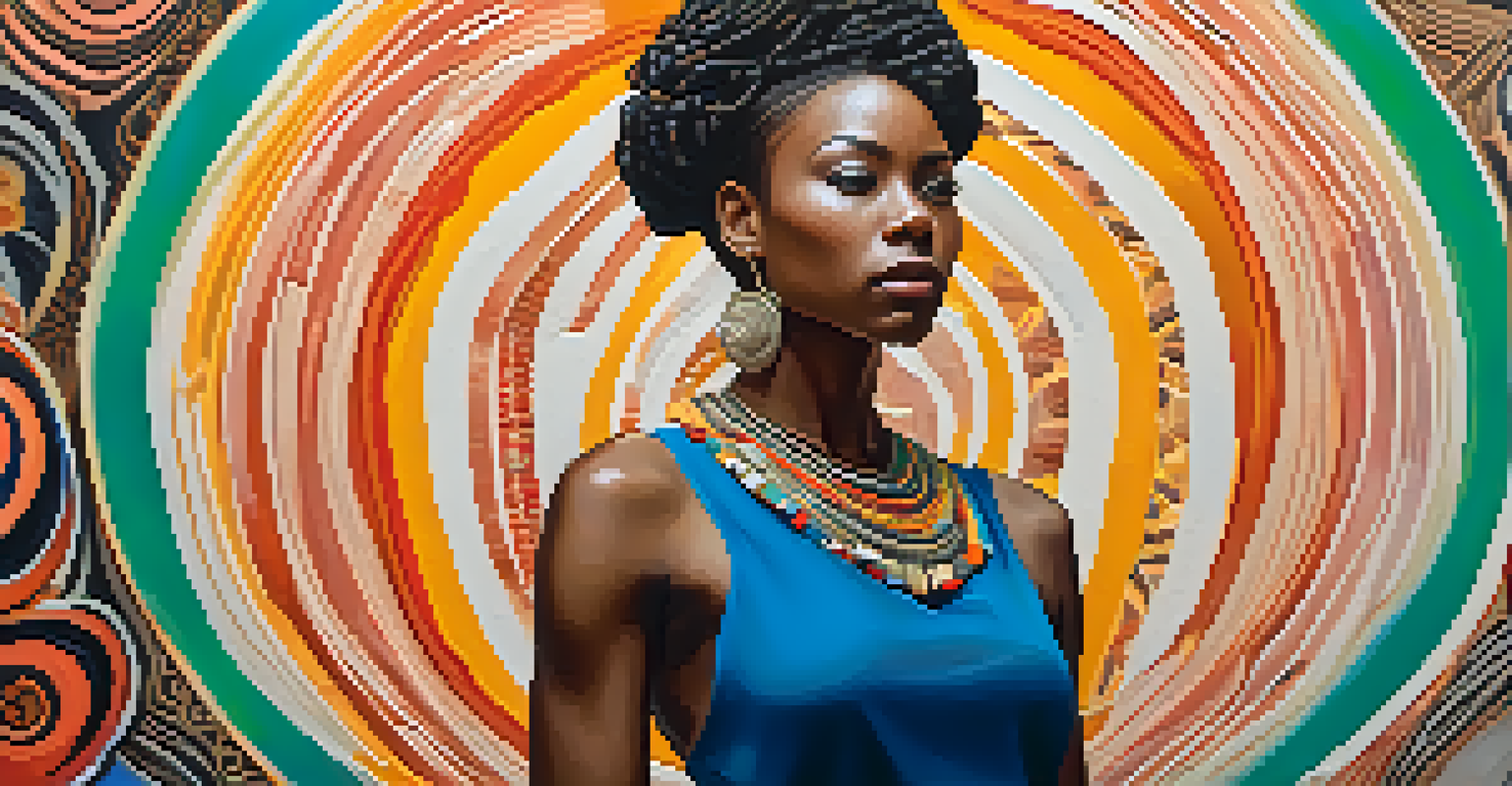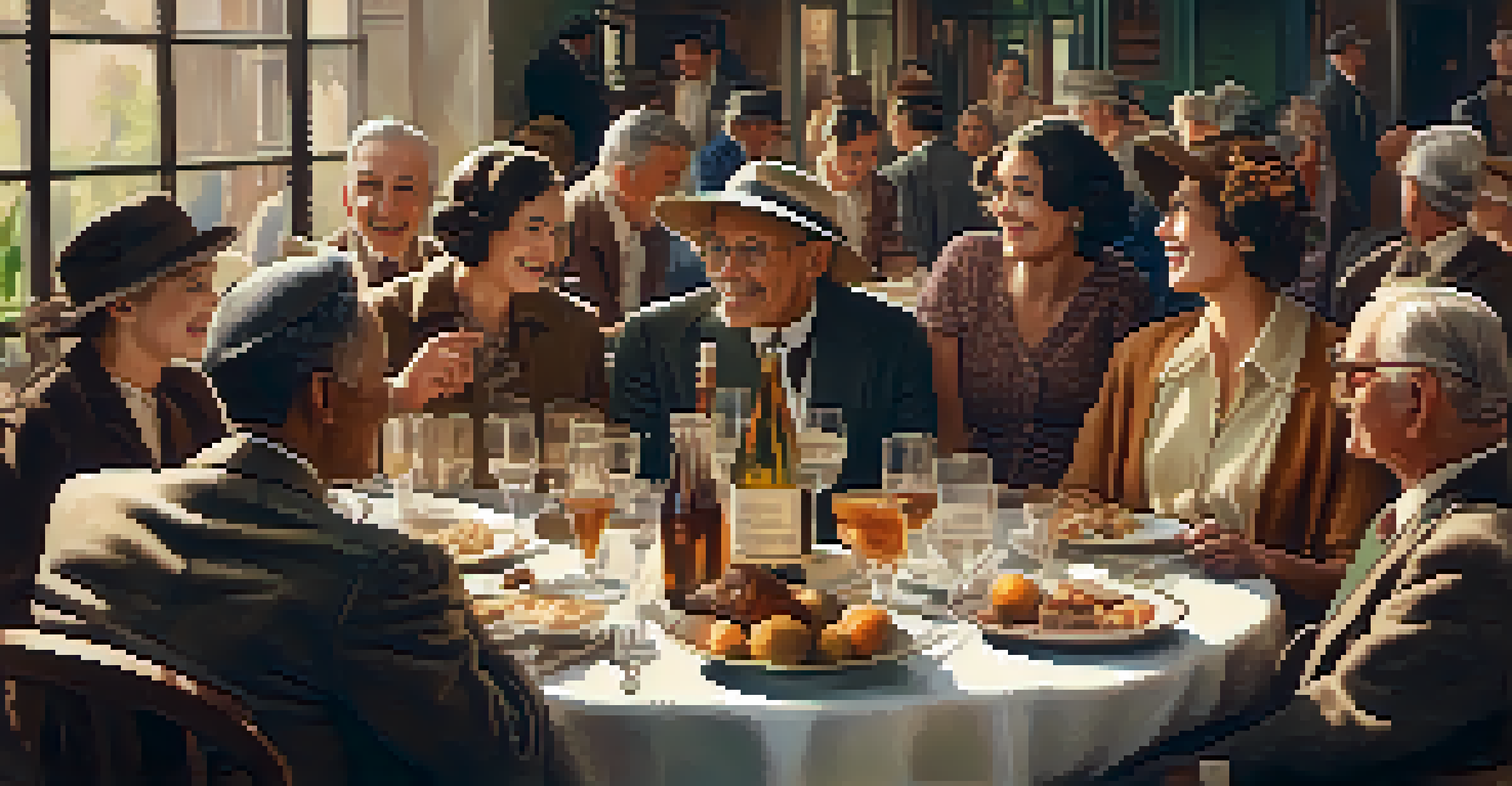The Artistic Legacy of the Harlem Renaissance in Modern Art

Defining the Harlem Renaissance: An Artistic Awakening
The Harlem Renaissance, spanning the 1920s and 1930s, was an extraordinary period of cultural rebirth for African American art, literature, and music. It emerged from the struggles of Black communities in the United States, especially in Harlem, New York. This movement celebrated the rich heritage and creativity of Black artists, writers, and thinkers, fostering a sense of pride and identity.
The function of art is to do more than tell it like it is; it’s to imagine what is possible.
During this time, figures like Langston Hughes and Zora Neale Hurston brought Black experiences to the forefront of American literature. Artists such as Aaron Douglas and Augusta Savage explored themes of racial pride and social justice through their work. This flourishing of creativity not only enriched American culture but also laid the groundwork for future generations of artists.
Ultimately, the Harlem Renaissance was more than just an artistic movement; it was a profound statement about the importance of cultural expression and the fight for civil rights. Its echoes can still be felt today, shaping how we view art and identity in contemporary society.
Key Artists and Their Impact on Modern Art
The Harlem Renaissance was home to a plethora of influential artists whose works continue to inspire modern creators. Take Aaron Douglas, for instance; his bold, stylized imagery and use of symbolism significantly impacted the visual arts. His focus on African American themes paved the way for future artists to explore their own cultural narratives.

Similarly, Augusta Savage's sculptures captured the essence of Black identity and struggle. Her work, particularly 'Genius,' reflects the strength and resilience of the African American community. The emotional depth and social commentary present in her pieces resonate with contemporary artists who seek to address issues of race and identity.
Cultural Rebirth in Harlem
The Harlem Renaissance was a transformative period celebrating African American creativity in art, literature, and music.
These artists not only contributed to the aesthetic of their time but also challenged societal norms, encouraging others to reflect on their own experiences. Their legacies live on in modern art, where themes of identity, heritage, and social justice remain pertinent.
Literary Influences: Shaping Modern Narratives
The literary contributions of the Harlem Renaissance have profoundly influenced modern writers and poets. Langston Hughes, with his unique blend of jazz rhythms and poignant themes, redefined poetry, making it accessible to all. His works often reflect the struggles and triumphs of the Black experience, a theme that continues to resonate in contemporary literature.
I am a Black woman, and I will not be ignored.
Zora Neale Hurston's rich storytelling and focus on African American folklore have also left a lasting imprint. Her novel 'Their Eyes Were Watching God' is celebrated for its deep exploration of identity and self-discovery, themes that are still relevant in today's literary landscape. Modern authors often draw on similar narratives, highlighting personal and collective journeys.
These literary pioneers not only expanded the boundaries of their genres but also paved the way for future generations to explore their own voices. The impact of their work can be seen in the diverse narratives emerging in contemporary literature.
Music: The Soul of the Harlem Renaissance
Music played a pivotal role during the Harlem Renaissance, shaping the cultural landscape of the era. Jazz and blues emerged as powerful forms of expression, giving voice to the struggles and joys of African Americans. Artists like Duke Ellington and Billie Holiday not only entertained but also conveyed deep emotional truths through their music.
These musical innovations laid the groundwork for various genres that followed, influencing artists across the globe. The improvisational nature of jazz, for instance, has inspired countless musicians to experiment with sound and form. Today, we see the influence of this era in contemporary genres like hip-hop and R&B, where storytelling and emotional expression remain central.
Legacy of Social Justice Art
Artists from the Harlem Renaissance laid the groundwork for future movements advocating for racial equality and social justice.
The legacy of Harlem Renaissance music continues to thrive, reminding us of the power of art to connect individuals and communities. As modern artists draw from this rich musical heritage, they keep the spirit of the Harlem Renaissance alive.
Visual Art: Bridging Past and Present
Visual artists of the Harlem Renaissance laid the groundwork for future movements, creating a bridge between historical and contemporary art. The distinct styles and themes of artists from this era can be seen in the works of modern painters and sculptors who explore similar cultural narratives. Their ability to weave personal and collective histories into their art continues to inspire new generations.
For instance, contemporary artists like Kehinde Wiley and Amy Sherald channel the spirit of the Harlem Renaissance by celebrating Black identity and challenging societal norms. Wiley's vibrant portraits and Sherald's unique representations of Black figures invite viewers to rethink notions of representation in art. They pay homage to the past while creating a dialogue about the present.
This ongoing conversation between past and present ensures that the artistic legacy of the Harlem Renaissance remains vibrant and relevant. As modern artists embrace and reinterpret these influences, they contribute to a richer, more diverse artistic landscape.
The Harlem Renaissance's Influence on Social Justice Art
The Harlem Renaissance was inextricably linked to the fight for social justice, a theme that continues to resonate in today's art world. Many artists of the era used their work to comment on racial inequality and advocate for change, laying the groundwork for future movements. This spirit of activism remains a vital part of contemporary art, where artists often tackle pressing social issues.
For example, the works of contemporary artists like Hank Willis Thomas and Theaster Gates explore themes of race, identity, and community engagement. Their art serves as a platform for dialogue, encouraging viewers to confront uncomfortable truths. By reflecting on the struggles of the past, these artists inspire hope and action for a better future.
Influence on Modern Artistic Voices
The themes of identity and cultural pride established during the Harlem Renaissance continue to inspire contemporary artists today.
The legacy of the Harlem Renaissance is evident in this ongoing commitment to social justice through art. As artists continue to address these vital issues, they honor the spirit of those who came before them while advocating for a more equitable society.
The Future of Art: Continuing the Harlem Renaissance Legacy
As we look to the future, the influence of the Harlem Renaissance on modern art is undeniable. The themes of identity, culture, and social justice that emerged during this period continue to resonate in contemporary artistic expressions. Artists today are embracing this legacy, using their platforms to explore and challenge the complexities of modern society.
In educational spaces, initiatives that promote the study of the Harlem Renaissance ensure that new generations understand its significance. Workshops, exhibitions, and programs highlight the importance of this movement, fostering an appreciation for the richness of African American culture. By keeping this history alive, we empower young artists to draw inspiration from their predecessors.

Ultimately, the Harlem Renaissance serves as a reminder that art is not just a reflection of society but a potent tool for change. As we celebrate and build upon this legacy, we pave the way for a more inclusive and vibrant artistic future.